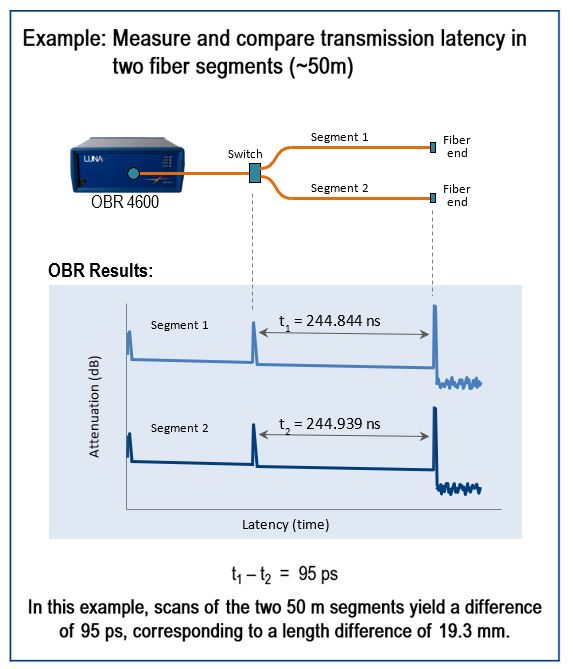Measure Latency in Optical Networks with Picosecond Accuracy
In optical networks where action on a message or signal is time critical, latency becomes a critical design element. Latency in communications networks is comprised of the networking and processing of messages, as well as the transmission delay through the physical fiber. Measuring and optimizing this optical transmission delay can be critical in diagnosing latency issues in a data center or maintaining quality control in the production of precision fiber links. Fortunately, the Luna OBR 4600 can measure this latency with picosecond accuracy.
Specifically, latency is the time delay of a light signal to travel, or propagate, in an optical transmission medium. The latency is related to the length of an optical fiber by the equation

Where L is the length, c is the speed of light in a vacuum and n is the index of refraction for the optical fiber.

Because the Luna OBR can measure loss and reflections in short fiber networks with ultra-high resolution (sampling resolution of 10 µm) and no dead zones, it is straightforward to extract the exact length or latency of a segment of fiber or waveguide by analyzing the time delay between reflection events. In fact, the OBR 4600 is able to measure latency or length this way with an accuracy of <0.0034% of the total length (or latency). For a 30 m optical fiber, for example, this corresponds to an overall length measurement accuracy of better than 1 mm, which is equivalent to a latency measurement accuracy of about 5 ps for standard fiber. Note that this is the absolute accuracy; actual measurement resolution will be much higher.
The example illustrates a typical application of measuring any differences in the length or latency of two fiber segments, each approximately 50 m in length. An OBR 4600 scans both segments and the latency of each segment is indicated by the distance between the two reflections at the beginning and end connectors of the segments. In this example, the difference in latency is found to be 95 ps. For this fiber, this is equivalent to a difference of about 19.3 mm in length.
Measuring length and latency is only one application of the versatile OBR reflectometer. For an overview of the OBR and common applications for ultra high resolution optical reflectometry, be sure to download Luna’s OBR white paper.